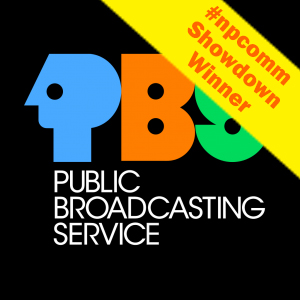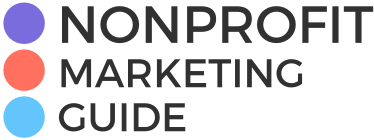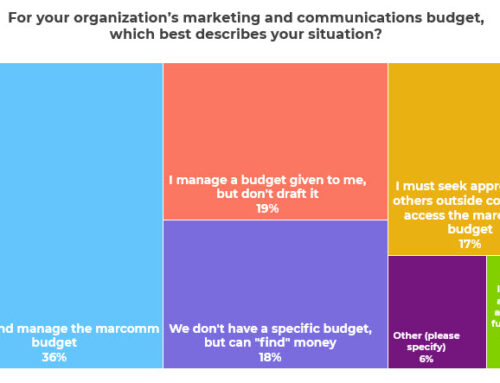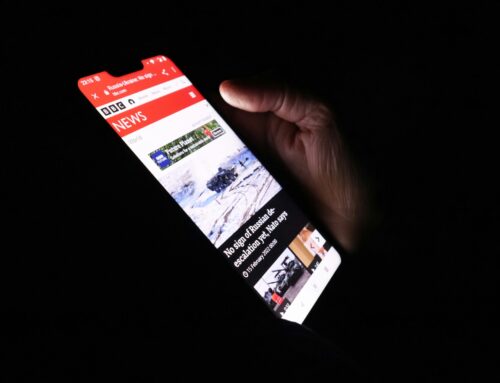
Antionette Kerr
I’ve asked our new contributing writer, Antionette Kerr, to help me referee some of these Showdowns. Antionette is a nonprofit leader, syndicated journalist and lover of poetry. After a decade of serving as an executive director, her passion for storytelling led her back into the world of nonprofit writing, consulting and publishing. She continues to serve as a board member for multiple statewide nonprofit agencies.
Let the Showdown begin!
~Kivi
In today’s #npcomm Showdown, let’s look at engaging your digital audience. Who does it best — NPR or PBS?
PBS and NPR. Those two acronyms that have stood tall with capital “J” journalism for decades. I wanted to check in to see where each of them landed on the Information Superhighway. As a self-proclaimed news geek, I crush on both, but I also know that even the most established media sources have struggled with the transition from programming to digital content.
Pound for pound, both websites have high-quality, heavy-hitting content. From the front line of the presidential race to the recent civil unrest, these media powerhouses provide insightful and carefully crafted stories that could keep a news junkie like me busy for days. With the ever growing challenge of feeding the 24-hours demand for online content, they deserve kudos for making journalism great again!
But does their content have to be so… Masterpiece Theatre?
Well, here is where these nonprofits diverge in their online communications:
NPR’s site leads with the straight-up news. You can access all the brainiac content from its in-depth reports you may have missed during your drive time, or you can catch up on news of the day with its front-and-center features.
But it seems like the rather old-school way of communicating with a savvy digital audience. Perhaps NPR was heading in the right direction, but hasn’t quite made it there. A statement at the bottom of the site claims: “The Two-Way [what they are calling the news section of the website] is the place to come for breaking news, analysis and for stories that are just too interesting – or too entertaining – to pass up. Get in touch with your questions, comments and leads.”
 There doesn’t appear to be an actual two-way portal for communication. I couldn’t find a place for a genuine exchange or interaction on its website. Are NPR loyalists supposed to email support staff to get in touch with their innermost feelings? All Things Considered – I couldn’t resist the reference – NPR’s invitation seems empty.
There doesn’t appear to be an actual two-way portal for communication. I couldn’t find a place for a genuine exchange or interaction on its website. Are NPR loyalists supposed to email support staff to get in touch with their innermost feelings? All Things Considered – I couldn’t resist the reference – NPR’s invitation seems empty.
Again, neither of these well-respected nonprofits need to be sensational to impress a newsy audience, yet visiting the PBS website immediately spoke to their desire to engage the digital divide. We’re talking about integrated social media (out front and center on the homepage) promoting live tweets and encouraging enthusiasts to communicate through popular hashtags such as:
#TheTunnelPBS
#PBSBakingShow
#EndeavourPBS
#ElectionPBS
#DancingOnEdgePBS

PBS brands itself as the Channel that Lives (clever word choice considering running jokes about dull programming) and I was pleasantly surprised to see their website breathing life into their digital communications strategy.
The site even features an online film festival that allows viewers access up to 25 free stories and encourages voting for fan favorites. PBS’s festival is the type of interaction that gave me, as an audience member, a sense of power (because I do love a good voting contest).
Results from the contest can also influence future editorial content. Think about it… If PBS fans send a flood of votes for “Teachers,” a film dedicated to a high school teacher who goes above and beyond the call of duty to keep a student from dropping out, that feedback could result in a popular PBS original series and blogging.
Their website also promotes LearningMedia, a free digital media content portal for teachers that is designed to help bring the classroom to life. The portal includes customizable features that help generate productivity tools for teachers, build puzzles, quizzes and storyboard tools that make learning interactive and personal.
Overall, it is impressive that PBS’s website does more than regurgitate television programs and news articles. The folks at PBS seem more interested in using digital communications to build community and engage the audience.
So today’s Showdown winner is…

While both websites provide quality journalistic content, PBS lives up to the promise of being the Channel That Lives. In a number of ways their audience can join in on a dynamic digital conversation.
Here are a few takeaways from this showdown:
- Re-purpose content, but don’t regurgitate. The digital audience is looking for something a little more dynamic and interactive.
- Something as simple as language can help overcome image misperceptions. PBS goes from dull to being a Channel that Lives. Check out the Nonprofit Marketing Guide free e-book: 25 Metaphors Nonprofits Can Use to Get Their Messages Across – and the Decrepit Dozen to Avoid for tips on how to use metaphors and make the technical message more touchy.
- Build buy-in by creating opportunities for audience feedback and community engagement within your website (because who doesn’t love a contest?).
- Create opportunities for shared customer experiences. Your version doesn’t have to be as sophisticated as PBS LearningMedia, perhaps a simple Libris Photoshelter collection of shared albums is a great path to creating a sense of community. Global Alliance for Clean Cookstoves shares a great example for building a shared digital storytelling audience.
Kudos to PBS for winning this #npcomm Showdown! Now, if they could only find a way to make the painting experience with Bob Ross digitally interactive…
if they could only find a way to make the painting experience with Bob Ross digitally interactive…







